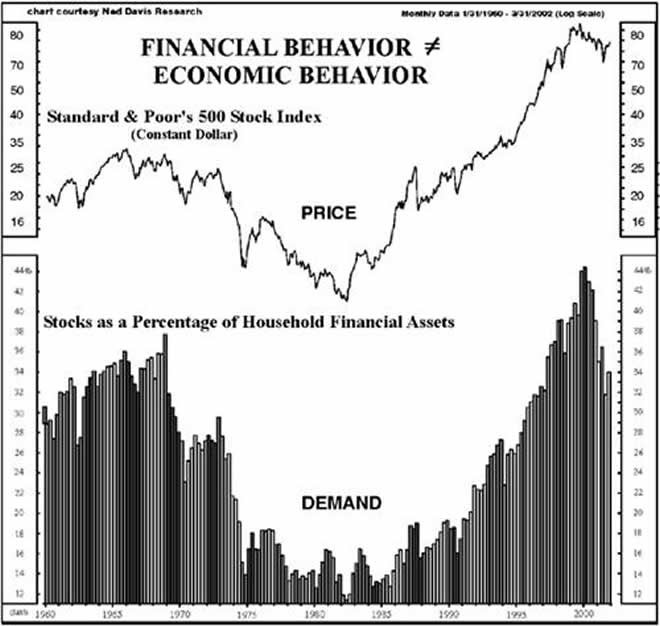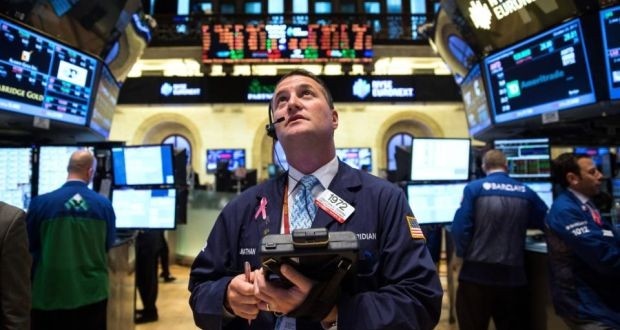The Efficient Market Hypothesis and its Application to Stock Markets
Post on: 6 Май, 2015 No Comment

Excerpt
The EMH and its Application to Stock Markets Page: 4
List of Abbreviations
x mean value of a sample α amount outside the confidence interval β sensitivity coefficient ε identical distributed random numbers σ² variance µ=E(..) expectation value ARCH autoregressive conditional heteroscedasticity CAPM Capital Asset Pricing Model conditional expectation value E(....) EMH Efficient Market Theory GARCH generalized autoregressive conditional heteroscedasticity p price PDF Probability Density Function r return s standard deviation of a sample t time X random number X t stochastic process
Page 5
The EMH and its Application to Stock Markets Page: 5
1 Introduction
Are financial analysts worth their payment? This is one of the central question of investors in stock markets. Even after the stock boom at the end of the 90ies, many private investors dealing with stocks and often belief in the advices of so called financial gurus. They present clever chosen historian charts with high returns and use this as a promise for the expected future returns. Negative risks of declining carts were often neglected.
Eugen Fama, the founder of the “theory of efficient markets” says clearly no to such financial gurus, who claim to predict the future stock development. He argued that prices don’t have a memory, and therefore it couldn’t use for predicting future prices. Future returns are randomly distributed and don’t subject to a certain pattern. If some investors beat the market, this is caused by random processes, because there are other investors, who don’t beat the market and make a lot of looses. Additionally, the ideas of randomly distributed stock prices were published in a book “A random walk down Wall Street” by (Malkiel, 1973)
A controversial debate began some years ago, if the theory of efficient market is still truth, because new time series models (ARCH-/GARCH models) can shown certain dependencies and time pattern in historian stocks. Consequently, a book “A non random walk down Wall Street” was published by (Lo and MacKinlay, 2000). This short introduction shows the general framework, the ideas and the challenges of the efficient market theory. Aim of the presented paper is a critical introduction based on a verbal and mathematical description on the theory of efficient markets. Introduced method and models were applied to empiric stock data.
2 The Efficient Market Hypothesis
2.1 Definition
The concept of the Efficient Market Hypothesis (EMH) states that prices of financial assets reflect all relevant information. Therefore prices in average are accurately, that means financial markets are efficient. A direct consequence is that an active investor cannot continuously beat the market and a passive investor can achieve the same profit in average as the active does. Overall, market values are always true and future prices are randomly depending on randomly incoming news (information). The EMH theory was developed by Eugen Fama in the early 1960. He and other authors corroborated a largely ignored thesis from a French mathematician, Louice
Page 7
The EMH and its Application to Stock Markets Page: 7
An example (Shleifer, 2000) should summarize the idea of efficient markets. This example based on the economical principal of arbitrage. It means the simultaneous purchase and sale of the same security in two different markets at advantageously different prices. In this sense, stocks could become overpriced relative to its fundamental value, if an irrational investor buys these stocks. The stock price exceeds the risk adjusted net present value of the expected cash flow. Then rational investors or arbitrageurs would sell these stocks, since they know the overpricing and would simultaneously purchase other securities to adjust their profit/risk ratio. This effect brings the stock prices down to its fundamental values, if the arbitrage is quick, substitutes are available and the arbitrageurs competing with each other. These arguments includes that arbitrageurs could not earn abnormal profits. The other way round could an underpriced stock purchased by an arbitrageurs in order to earn a profit. This increased the price in line to its fundamental value. Moreover, (irrational) arbitrageurs that buying overpriced securities and simultaneously sell underpriced securities earn lower returns than passive investors and loose therefore money. At the end, irrational investors become less wealthy and disappear from the market. So, in the long run markets are efficient due to arbitrage and competitive selection (Shleifer, 2000).
2.2 Tests
According to the concept of the EMH, all relevant information are instantaneously included in the stock prices and expected profits are not predictable. Therefore the best estimation of the share price of the next period would be the actual price. This is the general approach and called “fair game”, which was developed by Fama (see chapter 2.3.2). Models that implicate the “fair game” condition are relevant for testing the EMH like the Martingale Model or the Capital Asset Pricing Model (see chapter 2.3.5). Deviations from these equilibrium models related to empiric data are indicators for inefficient markets or for an inadequate model. Therefore the evaluation of the EMH is always connected to the underlying reference or benchmark — model. The problem consists of a lack of an universal usable reference model. This argument is called “joint hypothesis problem” (Sapusek, 1998) and prevents the unlimited verification of the EMH. Therefore autocorrelated- or abnormal profits in the time series signals not automatically an inefficient market, because the reference model themselves could be
Page 8

The EMH and its Application to Stock Markets Page: 8
wrong. ”As a result, when we find anomalous evidence on the behavior of stock returns, the way it should be split between market efficiency or a bad model of market equilibrium is ambiguous” (Fama, 1991).
Tests of the EMH with the acid of a reference model are indirect tests. In opposite to the indirect tests are the direct tests, that use time series looking for repeated pattern by autocorrelation analysis.
2.2.1 Test of weak efficiency
The general procedure for testing the weak form is to calculate the autocorrelation of returns for certain time lags. If the time series of returns contains linear dependencies, the autocorrelation would yield approximately one. On this base, a linear model to simulate the time series could be estimated.
Following (Sapusek, 1998) possible models are the Random Walk model, the Martingale-model or the static CAPM. These models simulate the market equilibrium in terms of the expected returns (compare chapter 2.3).
The origin definition by Fama would accept the EMH, if returns are uncorrelated. Otherwise correlations don’t indicate automatically that the EMH have to reject, because dynamic Asset Prizing models used as a benchmark would not contradict the theory of EMH (Sapusek, 1998).
Another method is the spectral analysis from the time series of returns. This technique transforms the time depending data into frequency depending data, which were displayed in conjunction with the return amplitudes. Similar to the autocorrelation method, repeated pattern in the data show an inefficient market. Some authors use the filter technique in order to evaluate the EMH. This trading strategy implicate that a stock movement in one direction hold on in the long run and therefore a price dependency is existent. A positive result would contradict the EMH. The first, who applied this technique was (Alexander, 1961). He described the filter variable as follows: ”If the stock has moved up x per cent it is likely to move up more than x per cent further before it moves down x percent”. The name “filter” results from the attribute of ignoring (filtering) small stock movements. The evaluation of the EMH will be carried out by comparing the portfolio development of a filtered stock technique with whose of a simple buy and hold strategy. Buy and hold strategy means to buy an stock and hold the same stock over the time. The profit results by the stock performance and dividend payments during the investment period. In opposite to the buy and hold strategy changes the stocks during the investment period according to the “filter mechanism”. If the returns of the buy and hold strategy are significant higher
Excerpt out of 28 pages — scroll top
eBook (PDF, ePUB and MOBI) for only 14.99 €














